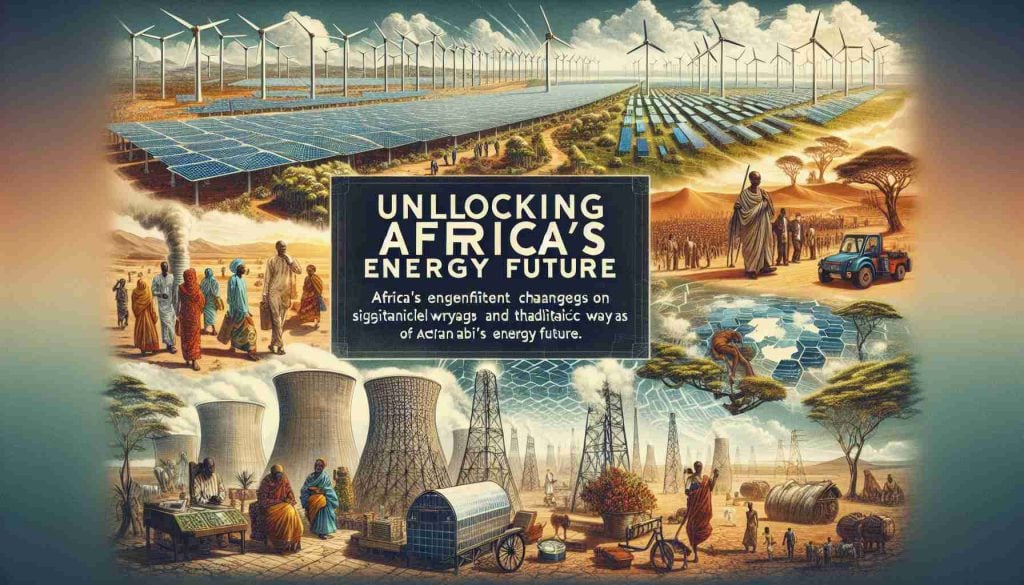- Africa aims to provide electricity to 300 million people by 2030 through the Mission 300 initiative.
- Over 600 million people in Africa currently lack electricity, indicating a significant need for innovative solutions.
- The summit received backing from 30 nations, with 12 countries creating specific energy compacts to advance the initiative.
- Attracting private investments is seen as critical for the success of energy improvements on the continent.
- Private sector engagement is encouraged not only in power generation but also in transmission and distribution.
- With $50 billion in commitments already, momentum for change is building in Africa’s power landscape.
In an electrifying call to action at the Africa Energy Summit in Tanzania, African leaders are igniting a revolution in the continent’s power sector. They’re urging the private sector to step up, advocating for bold reforms that aim to reshape energy access for millions. With over 600 million people currently living without electricity, the ambitious Mission 300 (M300) initiative, backed by heavyweight partners such as the World Bank and African Development Bank, aspires to provide electricity to 300 million people by 2030.
The summit saw an impressive endorsement from 30 African nations, while 12 countries revealed their tailored “energy compacts” to harness M300’s transformative potential. But will this initiative succeed where others have faltered? Experts project a cautious optimism, emphasizing that attracting private investments is crucial for the initiative’s triumph.
World Bank President Ajay Banga spoke passionately about the need for innovation and creativity from private investors, hinting at a lucrative opportunity amidst regulatory reforms aimed at clearing the path for investment. With a whopping $50 billion already pledged, the momentum is building.
Traditionally dominated by state-owned utilities, Africa’s power sector is experiencing a significant shift. Independent power producers (IPPs) are playing an increasingly vital role, particularly in Nigeria, where they now generate over 31% of the country’s electricity. Industry leaders insist it’s time for private firms to venture beyond generation and step boldly into transmission and distribution—areas sorely lacking investment.
As Africa stands at a pivotal moment, the message is clear: private investment is not just an opportunity; it’s essential for turning power dreams into dazzling reality.
Powering the Future: Africa’s Bold Energy Transformation
Background
The Africa Energy Summit in Tanzania has ignited a transformative vision for the continent’s power sector. With a staggering 600 million people lacking access to electricity, the ambitious Mission 300 (M300) initiative is set to light up the lives of 300 million individuals by 2030. This initiative, backed by major financial entities like the World Bank and the African Development Bank, signifies a critical shift from reliance on state-owned utilities to leveraging private investments for sustainable energy solutions.
Key Insights and Trends
– Private Sector Engagement: The summit has highlighted the increasing importance of the private sector in Africa’s energy landscape. Historically dominated by government entities, the entry of Independent Power Producers (IPPs) is reshaping electricity generation dynamics, particularly in countries such as Nigeria.
– Financial Commitments: Over $50 billion has been earmarked for investment in the energy sector, showcasing a significant commitment from both governmental and private stakeholders. This funding is essential for bridging the massive infrastructure gap that hinders energy accessibility.
– Energy Compacts: The introduction of tailored “energy compacts” from 12 nations demonstrates a tailored approach that seeks to leverage local contexts in achieving the goals of M300. Each compact defines specific strategies aligned with national priorities to optimize energy access.
Use Cases
– Rural Electrification: Initiatives focusing on off-grid solar solutions can serve rural communities effectively, providing clean and sustainable energy while reducing reliance on fossil fuels.
– Smart Grid Technologies: By adopting smart technologies, nations can enhance energy efficiency and reduce losses during transmission, ensuring better access and reliability for consumers.
Limitations and Challenges
– Regulatory Barriers: While reforms are underway, existing regulatory frameworks can still pose significant hurdles to private investment, necessitating further simplification and streamlining.
– Investment Risks: The high-risk perception associated with investments in developing countries can deter potential investors. Building confidence through successful pilot projects and comprehensive risk-sharing mechanisms is crucial.
Market Forecast and Predictions
According to energy experts, the landscape of Africa’s power generation could see a substantial shift by 2030, with potential growth in renewable energy sources like solar, wind, and hydroelectric power. Analysts anticipate that as African nations continue to embrace sustainable technologies, the overall energy mix will become more diversified, contributing to energy independence and economic resilience.
Related Questions
1. How will private investments reshape Africa’s energy landscape?
– Private investments are pivotal for developing infrastructure, implementing innovative technologies, and ensuring efficient energy distribution. As more private entities enter the market, competition can drive down costs and improve service delivery.
2. What role do renewable energy sources play in this transformation?
– Renewable energy sources will play a crucial role in achieving sustainable energy goals. The focus on solar and wind energy aligns with global trends towards clean energy and can dramatically improve access while reducing carbon footprints.
3. What are the expected outcomes of the Mission 300 initiative?
– If successfully implemented, Mission 300 could result in electrifying millions of households, significantly reducing energy poverty, and fostering economic development through improved access to power.
For further insights on Africa’s energy future, visit the African Development Bank or World Bank.
